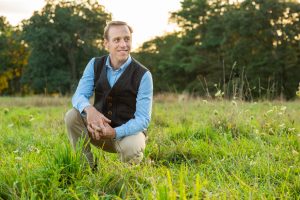
Gregory Horner is co-author of a series called, Profiles in Land and Management. He tells us about places all over the country where grazing is being used to improve land health–which may come as a surprise to many who have seen the land degradation caused by overgrazing. But when it’s done properly, public agencies are seeing the return of native plants and wildlife–and they’re saving money by letting animals do the work.
1’01 first experience of seeing degraded public lands
2’38 how this conservation grazing project came about
7’36 what the “adaptive” in adaptive grazing means
9’35 the tripod of sustainability
11’49 Sacramento River National Wildlife Refuge
13’30 the ecological meaning of the term “disturbance”
16’10 landscapes need disturbance
18’05 the improvement of native plants and wildlife with grazing
20’22 grazing as an alternative to herbicides and the cost savings
21’59 grazing more natural and labor-saving
22’27 grazing more functional for nesting birds than mowing
23’31 Missouri department of conservation
26’10 how young plants survive grazing
27’27 ground nesting birds co-existing with cattle
28’46 managing the process of making mistakes and learning from them
30’32 prairie restoration
33’29 oilfield reclamation using goats
35’40 why goats in particular
36’54 what these reclaimed oil fields look like now
39’55 restoring a former bombing range in Colorado
41’22 leaving land alone was insufficient for recovery
42’53 generating long-term revenue for the school system through adaptive grazing
44’05 grazing even in riparian areas
45’54 different players with different cultures and goals
47’38 projects move at “the speed of trust”
49’43 surprises along the way
51’30 hopes for this project
53’36 the process of forming successful partnerships



Subscribe:
Apple Podcasts
Spotify